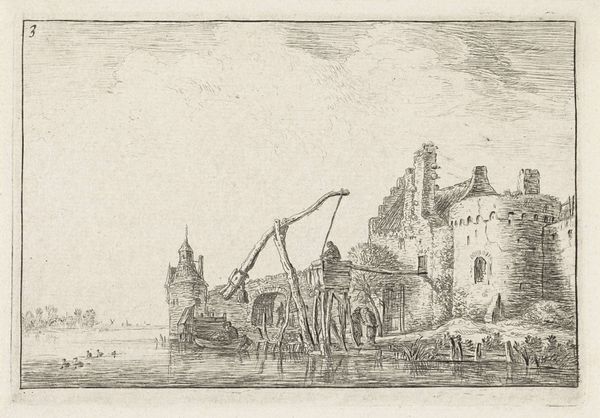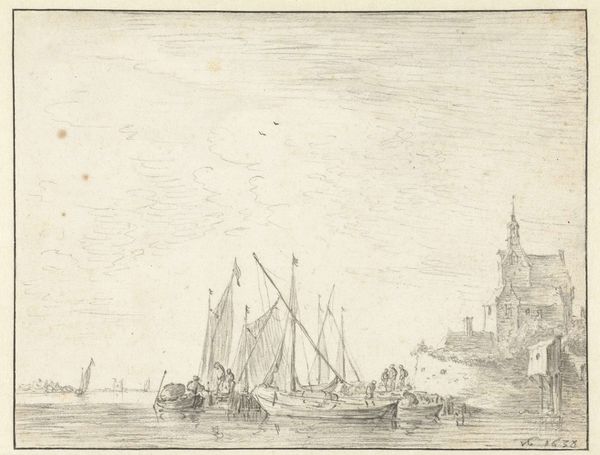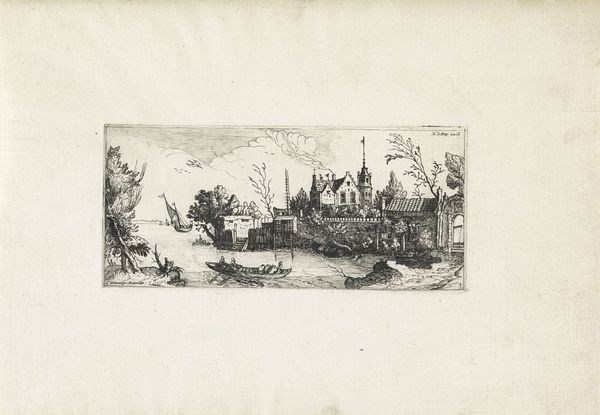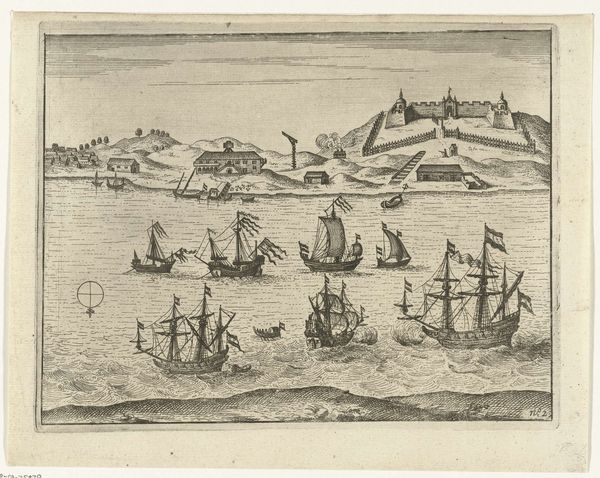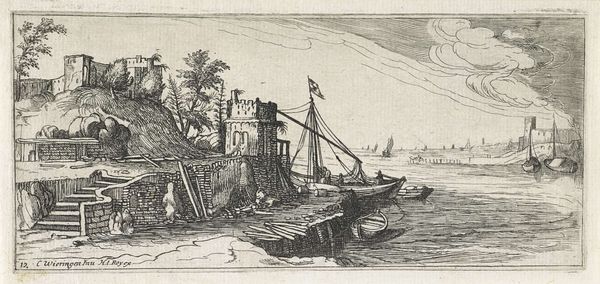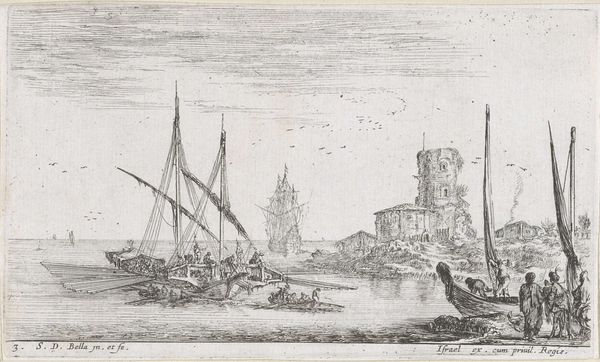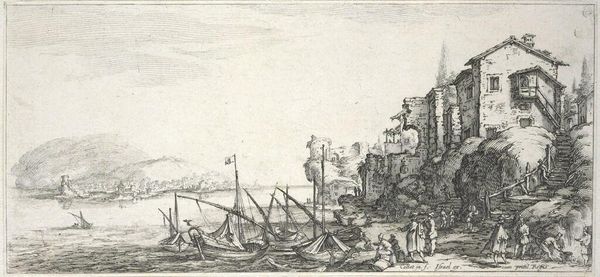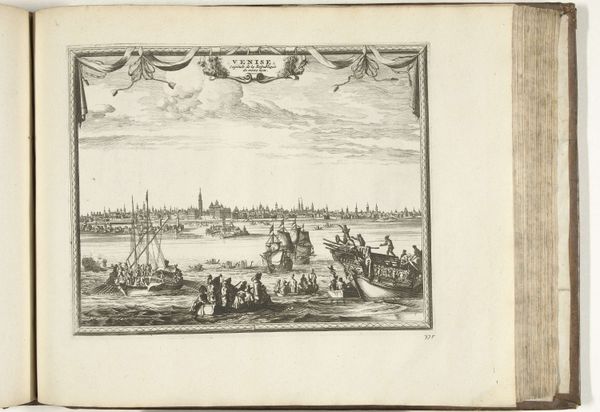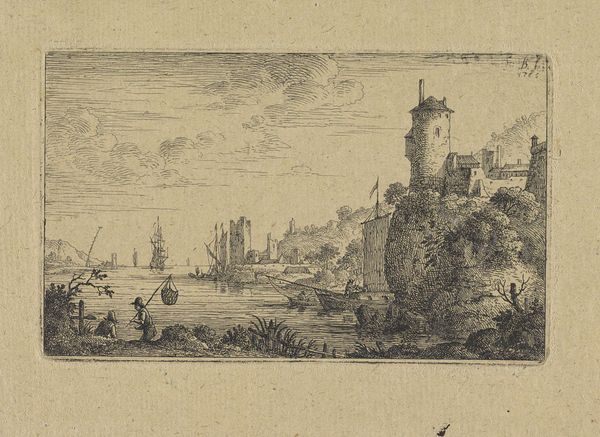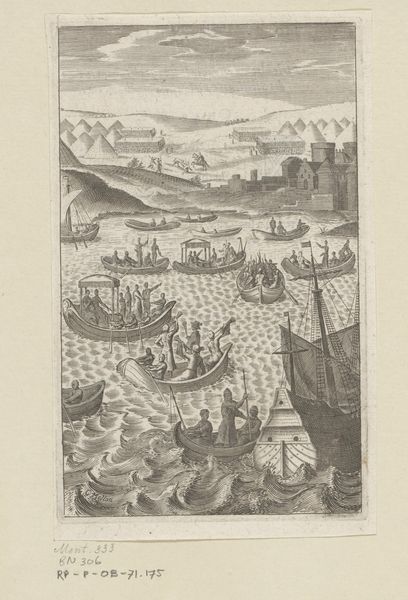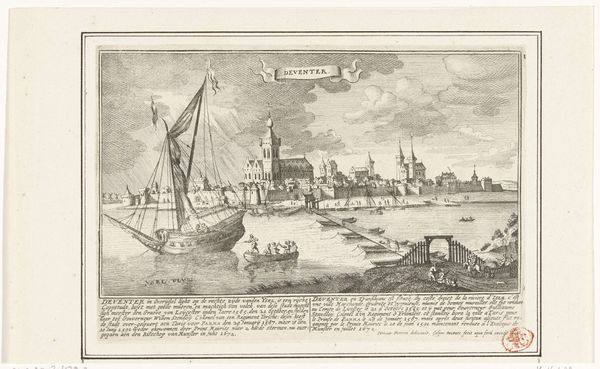
Illustratie voor 'Den Arbeid van Mars' van Allain Manesson Mallet 1672
0:00
0:00
romeyndehooghe
Rijksmuseum
print, etching, engraving
#
aged paper
#
dutch-golden-age
# print
#
pen sketch
#
etching
#
old engraving style
#
sketch book
#
landscape
#
river
#
personal sketchbook
#
pen-ink sketch
#
pen work
#
sketchbook drawing
#
cityscape
#
storyboard and sketchbook work
#
sketchbook art
#
engraving
Dimensions: height 90 mm, width 109 mm
Copyright: Rijks Museum: Open Domain
Curator: Here we have an engraving by Romeyn de Hooghe, dating back to 1672. It is entitled "Illustration for 'Den Arbeid van Mars' by Allain Manesson Mallet". Editor: It strikes me as a somewhat bustling, though meticulously rendered, scene. The crisp lines of the etching give it a sense of both precision and immediacy, almost like a snapshot of 17th-century harbor life. Curator: Indeed. The work exemplifies the Dutch Golden Age's fascination with maritime activity and burgeoning trade networks. This piece, held at the Rijksmuseum, was destined for a book—focusing, ironically, on labor connected to Mars, the god of war, despite depicting a rather peaceful, mercantile scene. Editor: That's fascinating. See the tower? Such a symbol of strength and perhaps even vigilance over the waterway. It’s juxtaposed rather intriguingly with the activity below, alluding, perhaps, to protection of the commerce represented by the ships. Water itself has been a potent symbol across centuries, standing for flux, travel, and the unconscious. Curator: The image's real value lies, perhaps, in revealing the nuts and bolts of 17th-century image production. Engravings were meticulously crafted objects that served the purpose of circulating knowledge, both factual and ideological. It brings into sharp focus the work involved in representing the world at that time. And this piece shows incredible craft. Look at the fine hatching to create shadow and depth! Editor: I am struck, too, by the little vignettes within the bigger picture. The people in the small boat. The ox pulling the cart. Each holds its own story, whispering possibilities about the human experience in this particular space and era. What did the ship represent, materially and psychically? Voyages? Riches? Fear? Curator: I think by focusing on those material elements, you grasp precisely the artist’s purpose: not merely documentation but also demonstration. The work aimed to render the scope of labor. Editor: Considering the print's symbolic depth combined with the physical nature of its creation certainly makes you appreciate its multifaceted narrative. Curator: Agreed. The layers of material reality and historical memory deepen the viewers’ insights of our place in history.
Comments
No comments
Be the first to comment and join the conversation on the ultimate creative platform.
